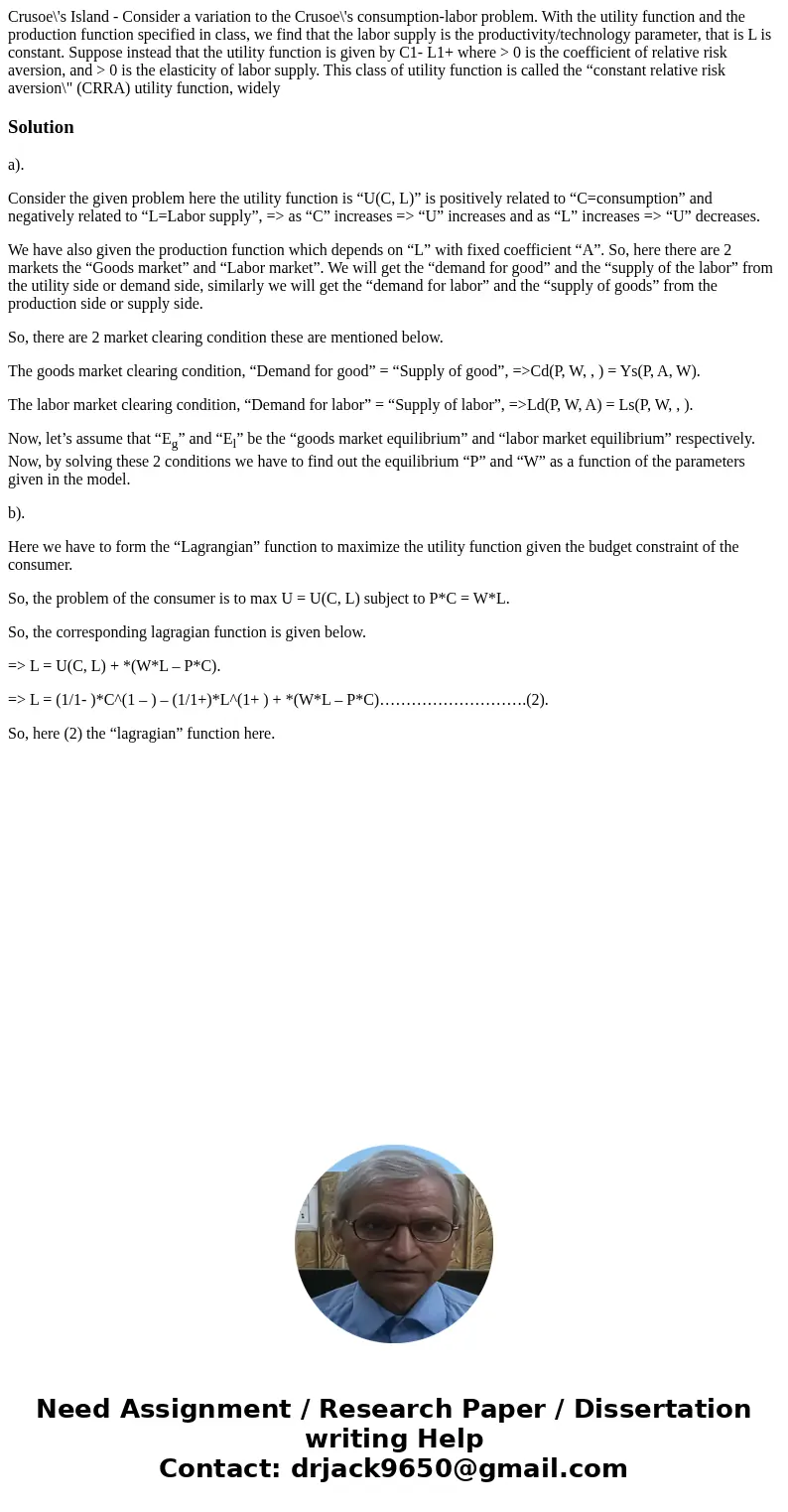Crusoes Island Consider a variation to the Crusoes consumpt
Solution
a).
Consider the given problem here the utility function is “U(C, L)” is positively related to “C=consumption” and negatively related to “L=Labor supply”, => as “C” increases => “U” increases and as “L” increases => “U” decreases.
We have also given the production function which depends on “L” with fixed coefficient “A”. So, here there are 2 markets the “Goods market” and “Labor market”. We will get the “demand for good” and the “supply of the labor” from the utility side or demand side, similarly we will get the “demand for labor” and the “supply of goods” from the production side or supply side.
So, there are 2 market clearing condition these are mentioned below.
The goods market clearing condition, “Demand for good” = “Supply of good”, =>Cd(P, W, , ) = Ys(P, A, W).
The labor market clearing condition, “Demand for labor” = “Supply of labor”, =>Ld(P, W, A) = Ls(P, W, , ).
Now, let’s assume that “Eg” and “El” be the “goods market equilibrium” and “labor market equilibrium” respectively. Now, by solving these 2 conditions we have to find out the equilibrium “P” and “W” as a function of the parameters given in the model.
b).
Here we have to form the “Lagrangian” function to maximize the utility function given the budget constraint of the consumer.
So, the problem of the consumer is to max U = U(C, L) subject to P*C = W*L.
So, the corresponding lagragian function is given below.
=> L = U(C, L) + *(W*L – P*C).
=> L = (1/1- )*C^(1 – ) – (1/1+)*L^(1+ ) + *(W*L – P*C)……………………….(2).
So, here (2) the “lagragian” function here.

 Homework Sourse
Homework Sourse